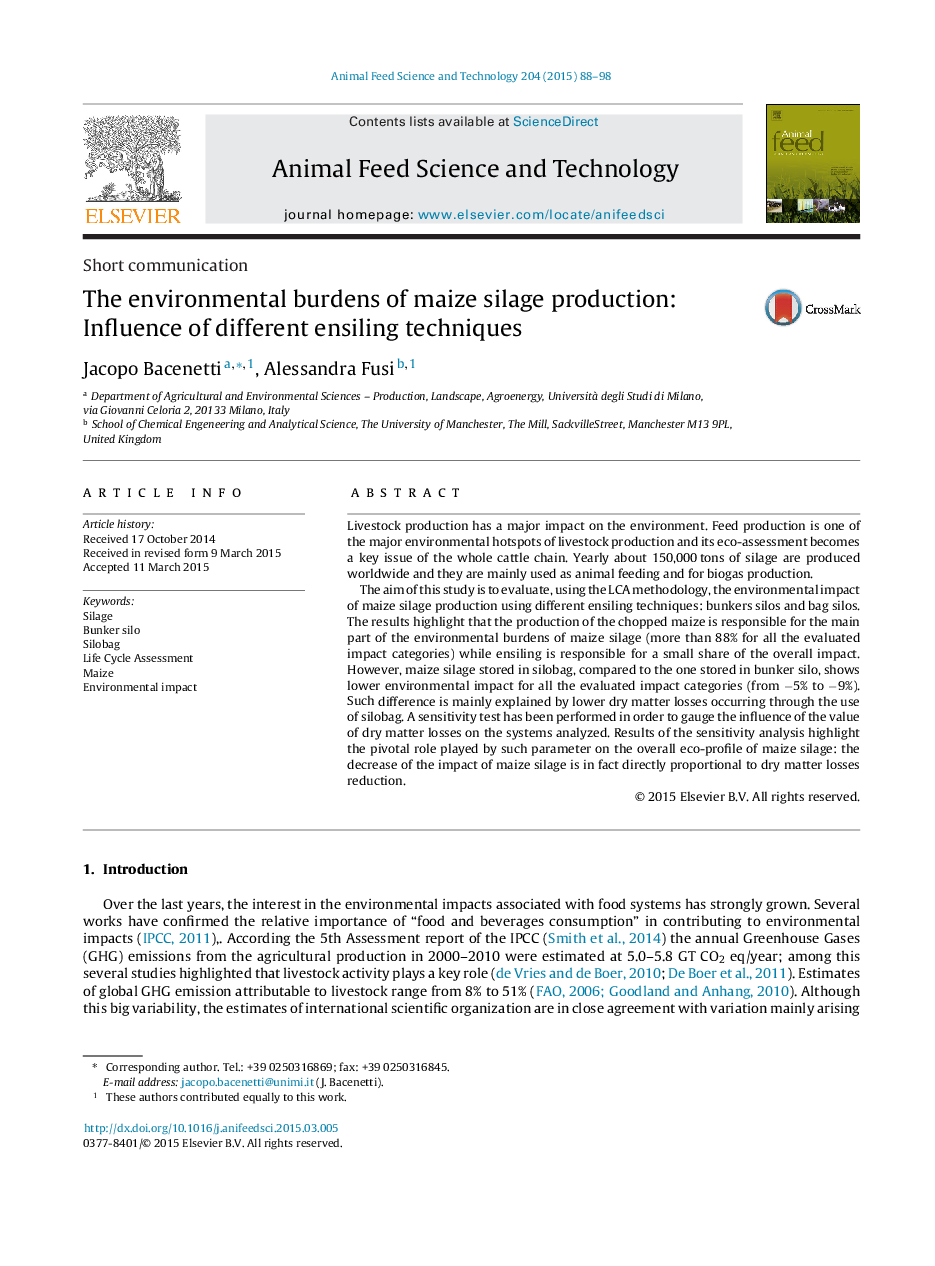| Article ID | Journal | Published Year | Pages | File Type |
|---|---|---|---|---|
| 2419476 | Animal Feed Science and Technology | 2015 | 11 Pages |
•About 150,000 tons of silage are produced worldwide each year.•Bunker silos and silobag are the two most used ensiling techniques.•Environmental impact for two different ensiling techniques is evaluated.•Silobag, compared to the bunker silo, shows better environmental performance.•Dry matter loss plays a key role on the overall eco-profile of maize silage.
Livestock production has a major impact on the environment. Feed production is one of the major environmental hotspots of livestock production and its eco-assessment becomes a key issue of the whole cattle chain. Yearly about 150,000 tons of silage are produced worldwide and they are mainly used as animal feeding and for biogas production.The aim of this study is to evaluate, using the LCA methodology, the environmental impact of maize silage production using different ensiling techniques: bunkers silos and bag silos. The results highlight that the production of the chopped maize is responsible for the main part of the environmental burdens of maize silage (more than 88% for all the evaluated impact categories) while ensiling is responsible for a small share of the overall impact. However, maize silage stored in silobag, compared to the one stored in bunker silo, shows lower environmental impact for all the evaluated impact categories (from −5% to −9%). Such difference is mainly explained by lower dry matter losses occurring through the use of silobag. A sensitivity test has been performed in order to gauge the influence of the value of dry matter losses on the systems analyzed. Results of the sensitivity analysis highlight the pivotal role played by such parameter on the overall eco-profile of maize silage: the decrease of the impact of maize silage is in fact directly proportional to dry matter losses reduction.
